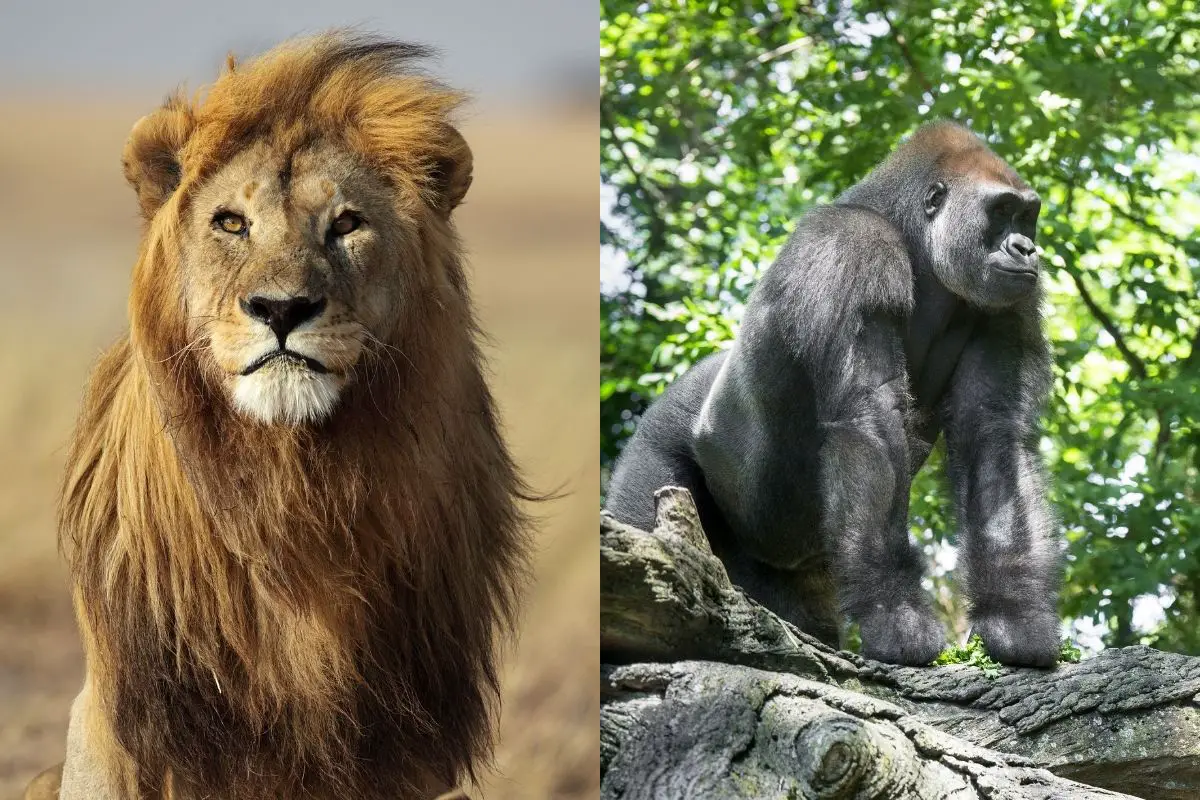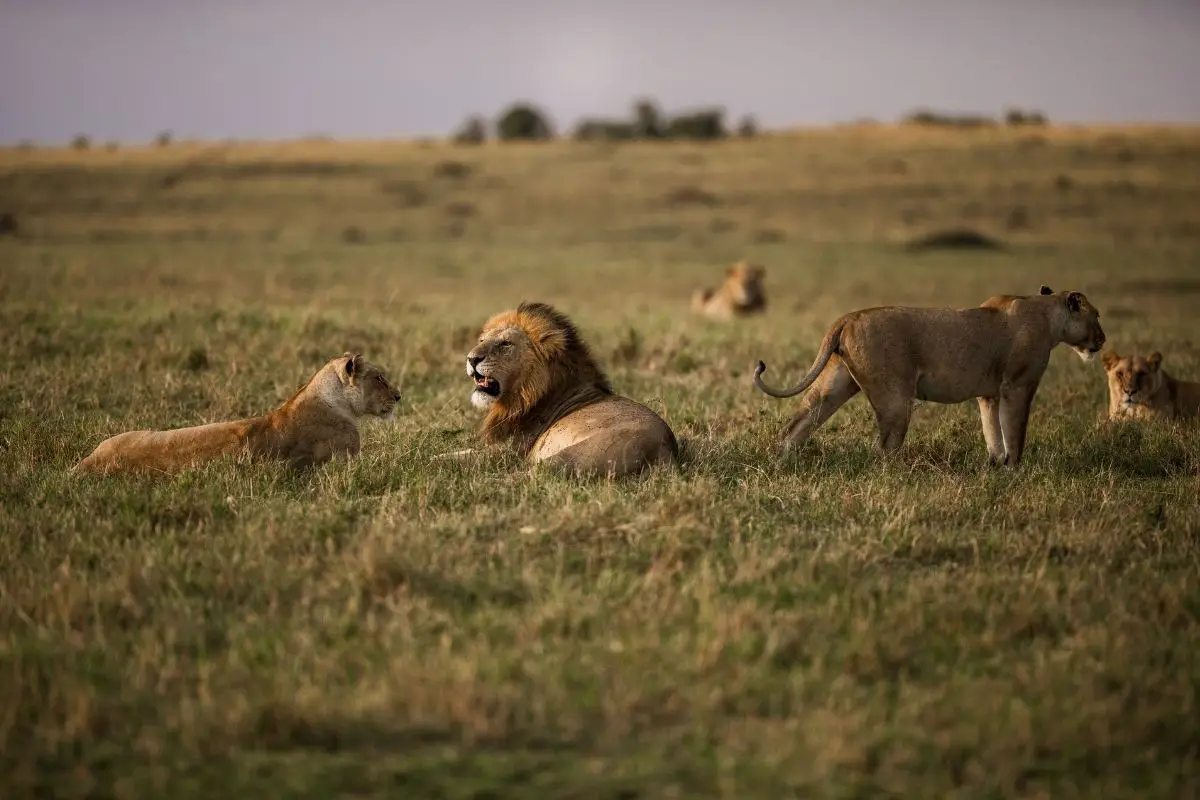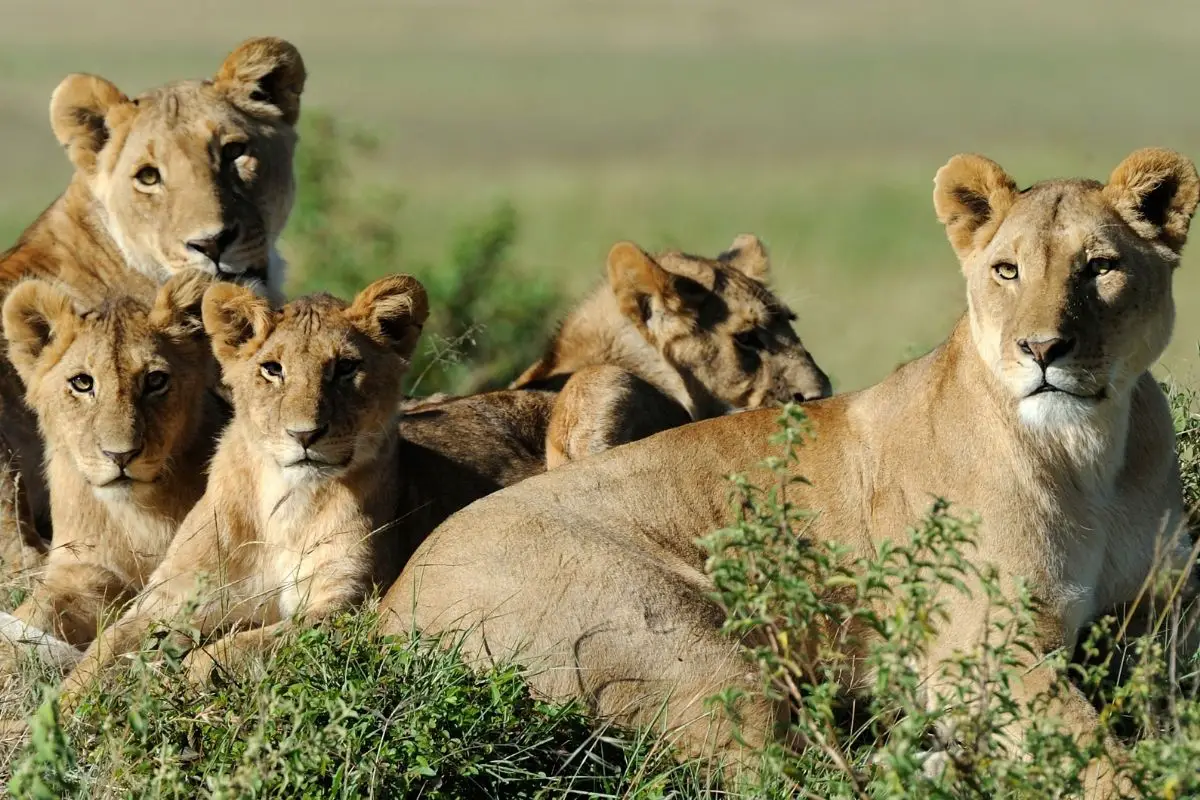The eternal debate over which apex predator truly deserves the title “King of the Jungle” has evolved significantly in 2025, with new scientific research and conservation insights reshaping our understanding of these magnificent big cats. While lions have held the cultural crown for millennia, mounting evidence suggests tigers may be the superior predator in nearly every measurable category.
Here’s what modern wildlife science reveals: tigers dominate lions in size, strength, hunting success, and individual combat ability – yet neither species actually rules dense jungles as their primary habitat. This comprehensive analysis examines the latest 2025 data on physical capabilities, behavioral patterns, conservation status, and historical evidence to finally settle this age-old question.
The “King of the Jungle” Myth: Setting the Record Straight
Before crowning our champion, we must debunk one of wildlife’s most persistent misconceptions. Neither lions nor tigers are primarily jungle dwellers. This cultural myth stems from centuries of European heraldry, literature, and early natural history accounts that conflated African savannas with dense tropical forests.
Where Lions Actually Live
African lions inhabit:
- Open savannas and grasslands (95% of population)
- Semi-arid regions and scrublands
- Woodland edges and riverine forests
- The Gir Forest of India (only remaining wild population outside Africa)
Tiger Territory Reality
Tigers demonstrate remarkable habitat adaptability across:
- Mangrove swamps (Sundarbans)
- Tropical and temperate forests
- Grasslands and reed beds
- Mountain regions up to 9,800 feet elevation
- Some dense jungle environments in Southeast Asia
According to the World Wildlife Fund, tigers occupy 13 Asian countries with vastly different ecosystems, demonstrating superior environmental adaptability compared to lions.
Physical Supremacy: Measuring Raw Power in 2025
The latest biometric data from wildlife researchers worldwide provides definitive answers about which big cat possesses superior physical attributes.
Size and Weight: Tigers Dominate
[Table: Comprehensive size comparison between tiger and lion subspecies]
Siberian Tigers (Largest Subspecies):
- Male weight: 400-660 lbs (180-300 kg)
- Length: 9.5-10.75 feet (2.9-3.3 meters)
- Shoulder height: 42-48 inches
Bengal Tigers:
- Male weight: 350-550 lbs (160-250 kg)
- Length: 8.5-10 feet (2.6-3.0 meters)
- Shoulder height: 36-42 inches
African Lions:
- Male weight: 330-550 lbs (150-250 kg)
- Length: 7.5-8.2 feet (2.3-2.5 meters)
- Shoulder height: 36-42 inches
The largest recorded wild tiger weighed 660 pounds, while the heaviest documented wild lion reached 550 pounds. This consistent size advantage gives tigers significant leverage in hypothetical confrontations.
Bite Force and Jaw Power: No Contest
2025 biomechanical studies using advanced pressure sensors reveal stark differences in jaw strength:
- Tiger bite force: 1,000-1,200 PSI
- Lion bite force: 650-700 PSI
- Tiger canine length: 2.5-3 inches
- Lion canine length: 2-2.5 inches
This 70% bite force advantage allows tigers to crush large bones and deliver more devastating killing bites. For context on big cat bite forces, our analysis of jaguar bite force versus leopards shows how this metric varies dramatically among feline predators.
Speed and Agility Comparison
Raw Speed:
- Lions: Up to 50 mph (short bursts)
- Tigers: Up to 40 mph (short bursts)
Agility and Jumping:
- Tigers: Vertical leap up to 12 feet, horizontal leap 30+ feet
- Lions: Vertical leap up to 8 feet, horizontal leap 25 feet
- Tigers: Superior swimming ability (can swim 3+ miles)
- Lions: Poor swimmers, avoid water when possible
Hunting Mastery: Solitary Precision vs. Group Tactics
Hunting effectiveness reveals crucial insights about each species’ evolutionary advantages and survival capabilities.
Tiger: The Ultimate Solo Predator
Tigers have perfected solitary hunting to an art form:
Hunting Statistics (2025 Research):
- Individual success rate: 15-25% (higher in experienced adults)
- Preferred prey weight: 130-440 lbs
- Largest recorded kill: 1,540 lb Indian gaur (solo kill)
- Average daily food requirement: 20-25 lbs
Hunting Techniques:
- Ambush predation using superior camouflage
- Throat bite or skull crushing bite for large prey
- Exceptional night vision (6x better than humans)
- Silent stalking within 20-30 feet before attacking
Tigers regularly take down prey significantly larger than themselves, including adult water buffalo, wild boar, and even young elephants – feats that would challenge an entire lion pride.
Lion: Social Hunting Specialists
Lions leverage teamwork for consistent hunting success:
Pride Hunting Statistics:
- Group success rate: 25-30%
- Solo male success rate: 15-20%
- Preferred prey weight: 110-400 lbs
- Average daily requirement: 15-20 lbs
Cooperative Strategies:
- Coordinated flanking maneuvers
- Lionesses handle most hunting duties
- Males focus on territory defense
- Ability to tackle large prey like adult buffalo through numbers
Combat Analysis: Historical and Scientific Evidence
Determining the superior fighter requires examining documented encounters and expert analysis from wildlife behaviorists.
Historical Combat Records
Roman Colosseum Documentation:
Ancient Roman records from gladiatorial games consistently favored tigers in staged combat. While ethically abhorrent by modern standards, these accounts provide insights into relative fighting abilities under controlled conditions.
British Colonial India (1800s-1900s):
In regions where Asiatic lions and Bengal tigers coexisted, British hunting records and forest officer accounts consistently noted tiger dominance in territorial disputes.
Modern Scientific Assessment
Leading big cat experts from the Panthera organization and wildlife research institutions overwhelmingly favor tigers in hypothetical combat scenarios due to:
- Superior individual fighting experience (solitary lifestyle)
- Larger size and stronger musculature
- More powerful bite and longer claws
- Greater agility and wrestling ability
- Enhanced rear leg strength for grappling
Documented Modern Encounters
Rare instances in Indian sanctuaries where territories overlap show tigers typically dominate water sources and prime hunting grounds, forcing lions to secondary habitats.
Intelligence and Problem-Solving Abilities
Recent 2025 cognitive studies reveal fascinating differences in big cat intelligence and adaptability.
Tiger Cognitive Advantages
- Superior individual problem-solving skills
- Better spatial memory for territory navigation
- Enhanced learning ability for hunting techniques
- Greater environmental adaptability
Lion Social Intelligence
- Complex social hierarchy management
- Coordinated group decision-making
- Advanced communication systems
- Collective memory for pride survival strategies
While lions excel in social intelligence, tigers demonstrate superior individual cognitive abilities crucial for solitary survival.
Conservation Status 2025: Both Kings in Crisis
The debate over supremacy becomes secondary when considering the dire conservation reality facing both species.
Tiger Conservation Update 2025
- Wild population: ~4,800 individuals (slight increase from 2024)
- IUCN Status: Endangered
- Population trend: Slowly recovering in India, stable elsewhere
- Key threats: Habitat fragmentation, poaching, human-wildlife conflict
- Conservation investment: $1.2 billion annually worldwide
Lion Conservation Reality 2025
- Wild population: ~19,000 individuals (declining)
- IUCN Status: Vulnerable (some subspecies Critically Endangered)
- Population trend: 2-3% annual decline
- Key threats: Habitat loss, human encroachment, retaliatory killings
- Range reduction: Lost 94% of historic territory
[Table: Decade-by-decade population comparison 1900-2025 for both species]
Understanding predator relationships, such as whether lions eat cheetahs, helps conservationists manage ecosystem balance and protect these apex predators more effectively.
Subspecies Showdown: Regional Champions
Examining specific subspecies provides nuanced insights into the tiger vs. lion debate.
Tiger Subspecies Power Rankings
- Siberian Tiger: Largest and strongest, adapted for harsh climates
- Bengal Tiger: Most numerous, proven fighters with documented lion encounters
- Indochinese Tiger: Agile forest specialists
- Malayan Tiger: Critically endangered but formidable hunters
- South China Tiger: Possibly extinct in wild
- Sumatran Tiger: Smallest but incredibly agile
Lion Subspecies Comparison
- East African Lion: Largest and most numerous
- Southern African Lion: Well-managed populations
- West African Lion: Critically endangered
- Asiatic Lion: Smaller but genetically distinct
Cultural Impact and Mythology
The “king” debate extends beyond physical prowess into cultural significance and human perception.
Lion’s Cultural Dominance
- Symbol of European royalty and heraldry
- Biblical and religious significance
- Western literature and film prominence
- Association with courage and leadership
Tiger’s Mystical Power
- Revered in Asian cultures and religions
- Symbol of power in Chinese zodiac
- Featured in martial arts and philosophy
- Associated with mystery and individual strength
The Scientific Verdict: Crowning the True King
Based on comprehensive analysis of 2025 research data, physical measurements, behavioral studies, and expert consensus, the tiger emerges as the superior big cat in virtually every objective measure.
Tiger’s Decisive Advantages
- Size supremacy: 20-30% larger on average
- Bite force dominance: 70% stronger jaw pressure
- Superior individual hunting ability
- Greater agility and swimming capability
- More versatile habitat adaptation
- Documented dominance in historical encounters
- Enhanced problem-solving abilities
Lion’s Notable Strengths
- Superior social organization
- Faster sprint speed
- Cooperative hunting efficiency
- Cultural symbolism and recognition
- Better adapted for open terrain
While lions maintain their cultural crown and excel in social dynamics, tigers prove themselves the superior individual predator and overall more formidable big cat.
Frequently Asked Questions
Who would win in a fight between a tiger and lion?
Based on scientific analysis, a tiger would likely win due to superior size (20-30% larger), stronger bite force (1,000+ PSI vs 650 PSI), better individual fighting skills from solitary lifestyle, and greater agility. Historical records and expert opinions consistently favor tigers in one-on-one encounters.
Are tigers actually bigger than lions?
Yes, tigers are significantly larger than lions. Male Siberian tigers can weigh up to 660 pounds and reach 10.75 feet in length, while male African lions typically max out at 550 pounds and 8.2 feet. Even Bengal tigers average larger than most lion subspecies.
Why are lions called “King of the Jungle” if tigers are stronger?
The “King of the Jungle” title is largely cultural, stemming from European heraldry, biblical references, and early natural history. Lions don’t actually live in jungles – they inhabit savannas. The title persists due to lions’ social nature, distinctive manes, and centuries of cultural symbolism rather than actual dominance.
Do tigers and lions ever fight in the wild?
Rarely, as their ranges barely overlap. Historically, Asiatic lions and Bengal tigers coexisted in parts of India, with documented territorial disputes consistently won by tigers. Today, only about 600 Asiatic lions remain in Gujarat’s Gir Forest, while tigers occupy different regions of India.
Which big cat has the strongest bite?
Tigers possess the strongest bite force among big cats at 1,000-1,200 PSI, followed by lions at 650-700 PSI. For comparison, jaguars have the strongest bite relative to body size at 700-900 PSI, while leopards bite at around 300-400 PSI.
Are lions or tigers better hunters?
Both excel in different ways. Tigers are superior individual hunters with 15-25% success rates and ability to take down prey twice their size alone. Lions have 25-30% success rates when hunting in groups but only 15-20% when hunting solo. Tigers demonstrate greater versatility and individual skill.
Taking Action: Protecting Both Kings
Rather than debating dominance, both species desperately need our conservation support. Here’s how you can help:
Support Conservation Organizations
- World Wildlife Fund’s tiger and lion programs
- Panthera’s Project Leonardo (lions) and Project CAT (tigers)
- Local conservation groups in range countries
- Anti-poaching initiatives and ranger support programs
Responsible Tourism
- Choose ethical wildlife sanctuaries over entertainment venues
- Support community-based conservation tourism
- Avoid facilities that breed cats for commercial purposes
- Book safaris with operators that fund conservation
Education and Advocacy
- Share accurate information about both species
- Support habitat protection legislation
- Advocate for stronger anti-trafficking laws
- Educate others about conservation importance
Whether you’re fascinated by whether jaguars can kill lions or curious about other big cat comparisons like puma versus mountain lion differences, the ultimate message remains clear: these magnificent predators deserve our respect, protection, and urgent conservation action.
The true royalty lies not in crowning a single victor, but in ensuring both tigers and lions continue to rule their respective domains for future generations. Their survival depends on our commitment to preserving wild spaces and supporting conservation efforts worldwide. In 2025 and beyond, let’s work to protect both kings of the wild cat kingdom.
- Bengal Cat vs Wild Bengal Tiger: Complete Comparison 2025 - October 31, 2025
- Complete Wild Cat Spotting Guide for Hikers 2025 - October 31, 2025
- Lynx vs Bobcat: Complete Field Identification Guide 2025 - October 30, 2025







